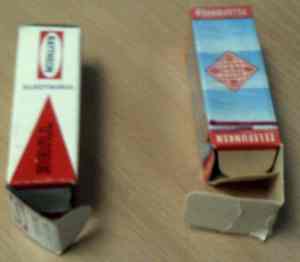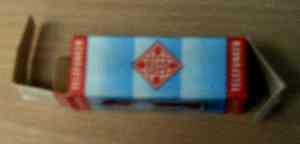Whatever happened to the UK goalkeeper?
When I was a lad in the 60s, every 1st division team had a respectable goalkeeper of UK origin, mostly with international kudos. Looking back at the days when English teams didn’t have a lot to worry about, goalkeeper-wise, makes me wonder why we don’t see goalkeepers of this calibre any more.
Here are the goalkeepers of the First Division teams of the Football League in the run-up to the 1966 world Cup:
1 Liverpool Tommy Lawrence (S)
2 Leeds United Gary Sprake 
3 Burnley Adam Blacklaw (S)
4 Manchester United Harry Gregg (NI) / Pat Dunne (EI) (replaced by Alex Stepney)
5 Chelsea Peter Bonetti
6 West Bromwich Albion Ray Potter*
7 Leicester City Gordon Banks / Peter Shilton
8 Tottenham Hotspur Pat Jennings (NI)
9 Sheffield United Alan Hodgkinson
10 Stoke City Bobby Irvine (NI) / Gordon Banks
11 Everton Gordon West
12 West Ham United Jim Standen* (replaced by Bobby Ferguson (S))
13 Blackpool Tony Waiters
14 Arsenal Jim Furnell* / Bob Wilson (S)
15 Newcastle United Gordon Marshall** / Willie (Liam) McFaul* (NI)
16 Aston Villa Colin Withers*
17 Sheffield Wednesday Ron Springett
18 Nottingham Forest Peter Grummitt**
19 Sunderland Jimmy Montgomery*
20 Fulham Jack McClelland (NI)
21 Northampton Town Bill Brown (S)
22 Blackburn Rovers Bobby Jones*
Only one non-UK player in that list, Pat Dunne from EIre! Also Gary Sprake, the regular Welsh keeper, Five Scots internationals (including Bob Wilson), and five keepers from Northern Ireland, of which four were NI internationals.
EIght players were not full internationals (*), but a couple of those(**) were U-23 internationals.
At that time Gordon Banks, Ron Springett, and Peter Bonetti were the first three choices for England. Tony Waiters got five caps for England in the process of Alf Ramsey deciding who his top three choices were for the World Cup squad.
Alan Hodgkinson had also played for England in the past. Gordon West and Peter Shilton’s England appearances were in the future.
Thirteen of the top 22 clubs in England had an English goalkeeper. Seven of those keepers had played, or would play, for England. Two had U-23 caps, and there were more good keepers still to emerge from the shadows. Ray Clemence was playing for Scunthorpe, Alex Stepney was at Millwall, Jimmy Rimmer was playing for Manchester United’s “A” team, and Joe Corrigan had just joined the Manchester City youth side. Some past heroes were still playing, eg. Reg Matthews, who had been capped for England five times in 1956, was still between the sticks at Derby County.
Alex Stepney gets a mention although he didn’t play in the First Division that season. He was actually playing for Millwall, but was bought by Chelsea as reserve to Peter Bonetti, played in only one game for them, then moved to Manchester United for very big money. His one England cap is testimony to the queue for the England job. He had to get past Banks, Bonetti, Springett and West in the pecking order, with the teenage Peter Shilton in the wings.
He got past West, as did Shilton. Springett was aging. For the 1970 World Cup, the four goalkeepers in the squad were Banks, Bonetti, Stepney and Shilton. Shilton was left in England, the other three went to Mexico. Banks was laid low with food poisoning, and Bonetti had the honour of being on the losing side in his stead, while Stepney’s match duty was to tell Banks the bad news.
Bob Wilson was often called the best goalkeeper that never played for England. Brilliant and consistent, he waited patiently for the call that never came. When he was 30, he got fed up of waiting and offered to play for Scotland, since his parents were Scots, and the rules had just changed to allow his selection. He was capped twice, becoming the first Englishman to play for Scotland since 1873! He might have played more, but for the SFA deciding to pick a Scots born keeper whenever possible.
This post is supposed to be about English goalkeepers, but Pat Jennings deserves special mention. He was world class, and was capped 119 times for NI. Most players retire from International football, but continue playing at club level. Jennings retired from club football in 1985, when he was 40, but played in the 1986 World Cup for NI, his last game being on his 41st birthday. He is also famous for the goal he scored from his own goal area in the 1967 Charity Shield match against Manchester United!
Peter Shilton scored a similar goal for Leicester against Southampton in October 1967, but that hardly ever gets mentioned because there isn’t a film of it on YouTube.
Why can’t we turn out goalkeepers like they used to in the old days?
Changethroughtransformation's Weblog


